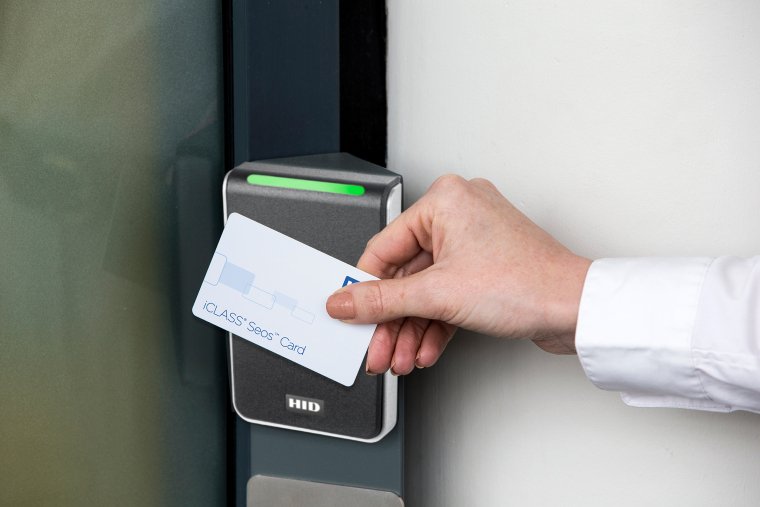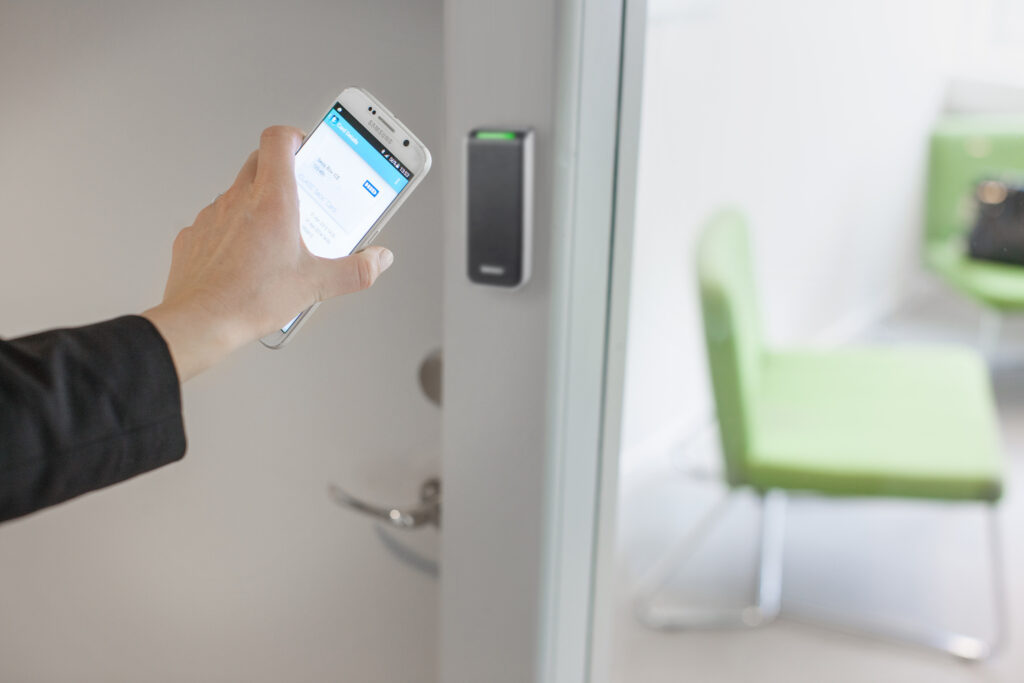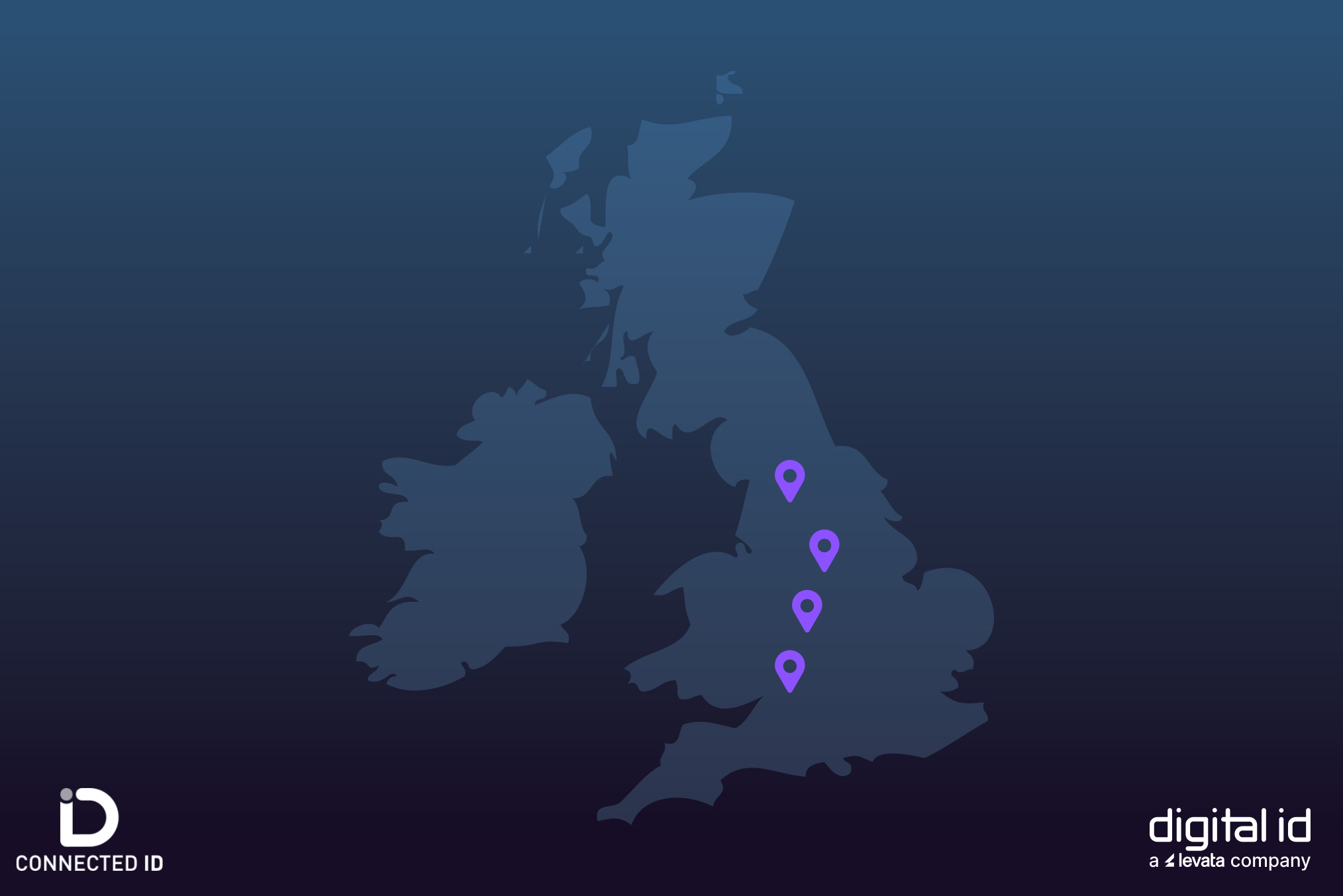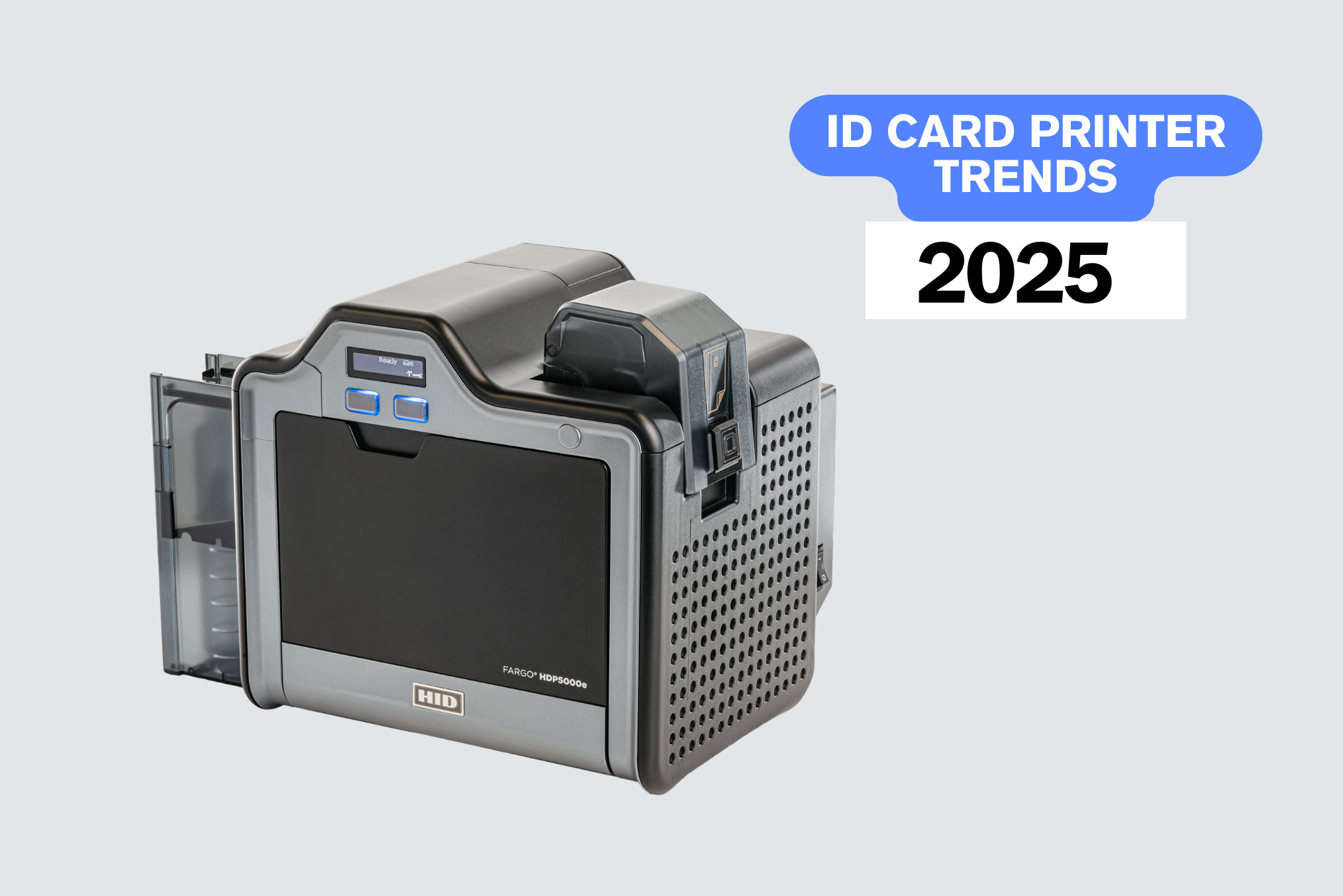In 2023, access control card readers are an essential part of an organisation’s security framework. With a wide variety of models and features on offer, it can be a little daunting finding the right access reader for your needs.
That’s why we’ve created a straightforward access control card reader buying guide to ensure you make the right choice.
But before we dive in, let’s take a look at how access control card readers work.
How do access control card readers work?

In most access control systems, card readers emit a signal that picks up and reads the data stored on a card. Access control cards contain an antenna and can transmit the data stored on the card’s chip directly to the reader.
The reader then sends this information to a central control unit (usually an access management system hosted on a PC or cloud server). This will then grant or deny access, depending on whether the contactless cards meet the required criteria to access the building.
If access is granted, the card reader will unlock the door lock, which is usually a powerful electromagnet. This sounds like a complicated process, but it’s all completed exceptionally quickly.
Now that we’ve covered how access control card readers work, let’s dive right in.
How much do access control card readers cost?
A lot of first-time buyers ask how much do access control card readers cost? The truth is that the cost of your access card reader will vary greatly depending on what you’re looking for in a reader.
Generally, most of our access control card readers will cost between £100 and £450, with some being cheaper.
The technology, frequency and type of reader you require will all affect the final price tag. However, the points in this guide aim to provide an in-depth breakdown of these features to help you select the right access control card reader for you.
What are the types of access control card readers?
Before purchasing your reader, you should be aware of the types of readers available. There are several types of access control card readers including:
Proximity Card Readers
Proximity card readers require a user to tap a card close to the reader, and an RFID signal is then utilised from a distance to allow or deny users access.
Magnetic Stripe Card Readers
A magnetic stripe card reader requires a card with a magnetic stripe being swiped against the physical reader to allow users to gain access.
Keypad Readers
You’re probably aware of the basics of a keypad reader. Essentially, this is a keypad you enter a code into to unlock a door.
Two-Factor Authentication Readers
This is any reader that allows the use of two access methods together, such as a keypad and RFID card. two-factor authentication readers are ideal for sites that require multiple forms of identity verification.
Now that we’ve looked at the types of access control card readers, let’s discuss what setting your reader will be used to secure.
What setting will your card reader be securing?
The setting your card reader will be securing is an important factor to consider when making your decision.
Will your access control card reader be used to secure a building, desktop or technology such as a printer? The reason we ask is that there are 3 categories of readers available for different settings:
Physical readers are best for keeping entry points in buildings and office spaces secure. Physical card readers will usually go on doorframes or next to doors at the front of the building and any other entry points.
Desktop readers help you securely log onto a PC or network and are suited for use in workplaces with multiple workstations. Desktop readers are a great choice for hotdesking and handling secure information, such as in the banking industry.
Logical readers provide an extra layer of security to technology such as a PC, network password programs or printers. These card readers keep computer system resources secure through validation through card credentials similar to a traditional access card reader.
Which frequencies are available?
Access credentials come in various models and formats, but the access control industry as a whole is dominated by two main types of cards:
When choosing your card reader, you should decide which frequency cards you will require. As suggested by the name, the main difference between Low-Frequency and High-Frequency cards are the frequency bands at which they operate. Here’s how else they differ:
Low-Frequency Cards
High-Frequency Cards
Low-Frequency cards tend to be more popular, however come with vulnerabilities. High-Frequency cards are more secure options.
Which is the best access control card reader?
The best access control card reader for your company will depend on the system you’re using and your requirements. In our experience, we’ve found that the most popular access control card readers are:

HID Signo Card Readers
HID card readers provide secure and efficient access control management for any organisation. As a leading solutions provider, HID’s signature line of Signo readers delivers powerful performance, enhanced security and is compatible with both access control cards and smartphones for ultimate user convenience.
Signo readers have been designed to support the widest range of credential technologies – including the most secure SEOS solution. The HID Signo 20 reader is one of our best-selling access control card readers to date and is a hit with several companies.
Best bits:
STid Architect Card Readers
STid access control card readers deliver high security, hands-free access for businesses around the globe. As one of Europe’s leading contactless identification providers, their Architect readers combine security, flexibility and simplicity and can be customised to display your company branding and logo.
Architect readers are compatible with RFID cards and can be upgraded to add Bluetooth. Bluetooth-enabled readers are also compatible with smartphones, providing users with complete ease. The STid Architect modular reader is one of our most popular readers and is ideal for both indoor and outdoor use.
Best bits:
Paxton Card Readers
Paxton readers deliver secure access control for everyone. The solutions provider houses the popular Net2 access control card readers, compatible with Paxton Net2 cards and key fobs. Paxton Net2 is an advanced access control software that is installed directly onto a PC and can instantly manage different access privileges.
The Paxton Net2 proximity card reader is a hit with our customers – it’s lightweight, has USB connectivity and perfectly sits on any desk space.
Best bits:
Ready to choose your perfect access control card reader?
Whether you’re upgrading your old access control card reader or buying a card reader for the first time, we can help.
Give us a call on 0800 988 2095 or email us at sales@digitalid.co.uk to speak to a member of our expert team today. Our experts have all the knowledge and know-how about our products and are always happy to help. We hope to speak to you soon.
Alternatively, you can check out our complete range of access control card readers here.



